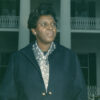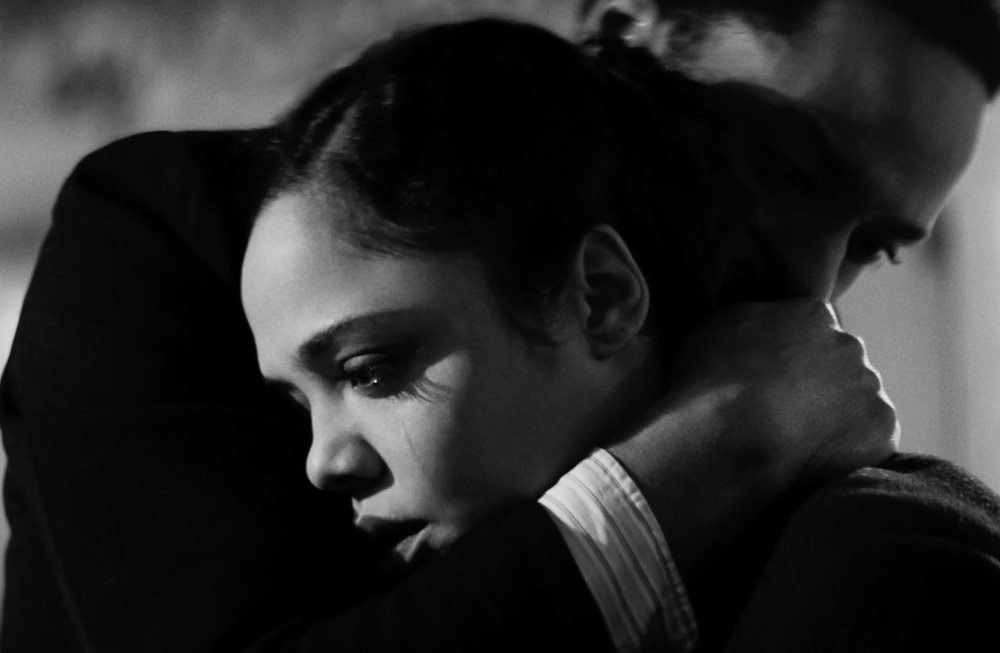Much like the films he works on, the first thing you hear when talking to Jacob Ribicoff is the attention to detail. You can practically hear the screeching on the street of passing cars and the shuffling of pedestrians as the the gifted sound designer describes the last day he had seen much of the crew of “Passing” in person before all involved had to work remotely due to COVID, recalling how one by one his colleagues filed into separate cars headed out of Manhattan after a temp mix on March 13th of 2020 and although the latest technology made it possible to continue post-production on the film, it felt like they were doing everything the old fashioned way.
“Everyone was cutting in their separate homes and we had spotting sessions by phone where we had the cut [of the movie] in front of us, each separately, and we’d say, ‘Okay, let’s go to the next scene, all press play at the same time and put our phones on mute,’ because it was like the very beginning of the pandemic, so we didn’t have all of the much better developed Zoom,” said Ribicoff. “The processes developed so much in a short amount of time for how to work remotely.”
Any distance that may have been required on the part of the crew to help put together Rebecca Hall’s exquisite directorial debut only served to bring audiences closer to its heroine Irene (Tessa Thompson), a light-skinned Black woman whose lone attempt to enjoy tea at an all-white social club reunites her with Clare (Ruth Negga), a childhood friend from the South she hardly expected to see after moving to Harlem, much less living full-time in the guise of a white woman. Hall had narrowed in on sound as the way in which she could feel as off-kilter as she had been when she was first enraptured with Nella Larsen’s 1929 novella that inspired the film, hoping to have audiences “lean in to listen” as the seemingly unfinished melody of Tsegué-Maryam Guèbrou’s “Homeless Wanderer” could clue them in to Irene’s curiosity about Clare and each carefully chosen ambient noises from fine china to bird tweets would be slightly unnerving when it cut the quiet that defined both their lives, carrying secrets that only they knew.
Ribicoff has a way of summoning all the other senses through sound whether it was conjuring the salty air of New England in “Manchester by the Sea” through the bellow of boat horns or the frenzied streets of Bangalore in “The White Tiger,” and in “Passing,” one’s chest would seem to tighten because of what passes through the ears as Irene doesn’t have the luxury of imagining what’s off in the distance when she has to be hyper-conscious of everything that’s happening immediately around her out of fear of one false move. Sounds don’t reverberate as much as pinch and prod, all precise and attached to a specific mood and as the two women can often be seen hiding their emotions, what they hear reveals them. With “Passing” now streaming on Netflix, Ribicoff spoke about how he was able to give the characters’ perspective shape sonically, the excitement involved in sourcing 1920s-era sounds and his many professional and personal connections that made the project so close to his own heart.
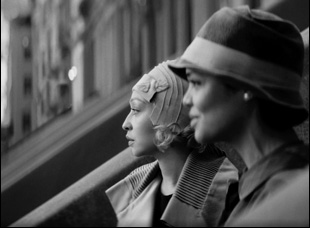
Jay Rubin, the studio manager at PostWorks in New York who I’ve worked with for years, had this sound job and when I went to look it up, I immediately say many familiar names. Rebecca, I had never worked with personally, but I worked on a movie that Oren Moverman directed and Oren is one of the producers of “Passing,” and Forest Whitaker and Nina Yang Bongiovi are [also] producers and of course, Forest is the star of “The Godfather of Harlem,” the television series which I’ve now been the supervising sound editor for two seasons, so there were all these points of connection. Sabine Hoffman, the picture editor, I’ve loved working with on a few other projects too, so things just came together and the next thing I knew, Rebecca, Sabine and Oren had me look at a cut in their picture editing cutting room and and then we all went out for some lunch and just talked about it.
There are personal points of connection as a movie. As a kid, when I was 11, growing up in New York City in the ‘70s, I made friends with another kid who was into collecting silent comedies on like Super 8, regular 8mm, reel to reel film, and I’d join up with him and we’d have this hobby at 11, 12, 13 years old, collecting these movies. We would get them via mail order – Chaplin, Keaton, Harold Lloyd, Laurel and Hardy and other lesser known comedies and we’d we’d run the movies and put a ragtime record on it and play that along. I got really into silent movies at that point, and this movie is visually so much in the aesthetic of movies of the ‘20s and [there was so much of a] visceral primal connection for me. And in terms of how the characters in the movie are dealing with race, I’m not African-American, but from the time I was old enough to remember, I’ve always felt a connection and with African-American culture and people, so somehow it felt right. Then when we all went out to lunch, [Rebecca] mentioned that she herself was of mixed background, and I married a person of color, so all of that coalesced together for me to make it a meaningful project.
But beyond that, as a sound designer, this is what we’re always looking for directors for whom sound is a meaningful and significant part of their process. For Rebecca, there was no question that she had a lot of ideas in terms of sound, in terms of how to evoke the period of New York City — it was being built at that point, so we talked a lot about [how] we should hear construction sounds, which you hear a little in the beginning where it kind of emerges out of this foggy soundscape and then becomes much clearer as we see the women going through the toy shop. It was talking about how we would use sound not just to capture New York and Harlem of the late ‘20s, but then even further, not just get into the head of the main character Irene, but to be with her emotionally and to ride her emotional arc.
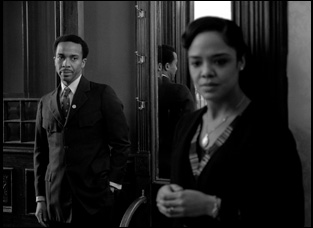
Yeah, it definitely was. There were a lot of things we did to achieve that goal of bringing the viewer along with Irene and trying to get viewers into Irene’s point of view, seeing the world as she’s seeing the world. For example, breathing [became] a motif in the film where after Irene has an intense conversation either with Clare or with her husband Brian [payed by Andre Holland] or her friend Hugh [played by Bill Camp], she winds up closing the door, the person leaves the room and she’s standing against the door and she’s breathless. It’s a moment where she’s processing what just happened and it gives the viewer a chance to do the same and be with her because in a sense you’ve been in that conversation with her and now you’re taking a beat. So we recorded Tessa via ADR doing more breathing so we could put a button on that idea and that was really helpful.
But then there were things in terms of sound design that we were able to pull off where Rebecca had ideas and it was a journey for both of us to get to bring the idea to fruition. For example, the tea party scene where [Irene] ends up dropping the teapot — purposefully, as we find out — and the whole point of that was how do we experience that scene as if we were there at this tea party, obligated to be a hostess and we don’t really want to be there. We have things going on emotionally in our head, our heart is pounding, we get there, we grab the teapot, we have to serve people. It was a lot of trial and error through the elements that we had — the dialogue of the people talking to her, her breathing, her walking, the crowd of people gathered there, the sudden dropping/shattering of the teapot — to mix them in such a way to focus the viewer. We made her voice louder than you would normally hear a voice in a movie as people are talking to her, so their voices feel distant and her voice feels extra loud as if you’re hearing your voice too loud in your head. Then as she walks into the next room, she’s kind of shaking, so we did rattling of the china to bring that out. And then her friend runs up to her, so at first her friend is part of the fog of voices that’s in the background, but then emerges, so it seems like it would be beyond obvious how to make that work, but it wasn’t at first.
We had the good fortune of actually being able to mix the movie, put the movie on the shelf for a few months and then come back and do some last minute touch-ups that was really helpful. I think the movie presents itself as a series of sonic puzzles where we have to solve how do we get the audience to be with Irene in various moments and by the time we finished mixing it the first time, we had solved most of the puzzles, but not all of them. It helps in the process to build in a little perspective. Normally mixing movies, it’s like a headlong dash to get the movie mixed and then you prepare it and you might mix late hours or long hours and all of a sudden, it’s done. And I’m sure there are many people that have finished a mix and you deliver it and that’s it, it’s done. It’s locked and you’re never going to go back and change anything and what happens if you do that and then you and the director look at the movie and decide, you know what? I had this other idea that would be even better. We had that opportunity when Dolby gave the movie an ATMOS grant going into Sundance for Sundance, and that’s where we had the great good fortune of being able to go back in and revisit some of those puzzles where we felt like we had some common ideas to make them even better.
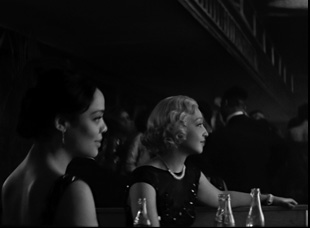
That’s maybe my favorite scene of the movie, just the dreaminess and the opportunity to move off of reality. That came about where Sabine and Rebecca had already built a version of sound design while they were cutting the AVID, which was good, and then I kept elements of that – certain sounds that were part of [Irene’s] everyday life like an elevated train passing, but there was this idea to reprise some voices or words or Irene’s laughter, just some little human touchstones from Irene’s experience throughout the movie up until that point and to have those echo for her. It’s a very sensuous feeling that she has in waking from that nap and then having a dream, so we wanted to keep that in that scene as well.
What I tend to do is put too much sound in at first and then thankfully I have good judicious directors to say, “No, no, no…that’s way too much.” And that’s what happened. After the first version I put together that had voices all over the place, both Sabine and Rebecca rightfully pared that down to a minimum, which makes it a much quieter experience and the score is there as well, which is very important, but what I love about it is how Iirene] finally wakes up to see Brian, her husband, sitting on the edge of her bed, and it is that feeling we’ve all had when we’ve taken a nap and wake up in the middle of the day and suddenly you’re aware of life outside your room or wherever it is that you are and things almost seem too loud. You don’t necessarily want to let go of that dream that you have. So I remember the entire movie was a process of making things quieter and quieter and quieter. As we’d do passes of the mix of the movie, we kept pulling things out and quieting things down. I remember for that one moment, we left everything – the neighborhood, car horns, maybe some kids out on the street, maybe a dog barking, neighborhood sounds — louder so you would have that feeling.
The last time we spoke about “Manchester By the Sea,” I learned of your incredible sourcing abilities – you’ve got vintage doorbells and phones here. Was it fun to find some of these sounds?
It was definitely a lot of fun and it’s great when you get to define a very narrow territory, especially if it’s a period territory sonically. I was able to draw a lot from my library of sounds that I’ve built up over the years, so that came through for me and it’s as much as what you don’t use as what you do. I found a phone ring that not only sounded old, but almost a little warbly, so I used that one a few times when you hear the phone ringing, and the grandfather clock chimes — that goes to Rebecca. She said, “I want that to be loud when that rings “and in fact, they had that in their cut already, so that was just a matter of me adding a few little things, but there’s a sound when a grandfather clock chimes, there’s a mechanism that catches right before the chime goes off, like a “ba-ding!” – and Rebecca said, “I want to hear that little mechanism that catches before the chime starts, so I got to make sure that that was in there. It was great to work within a world that’s another time and place and just get to live in that world. That was very gratifying.



